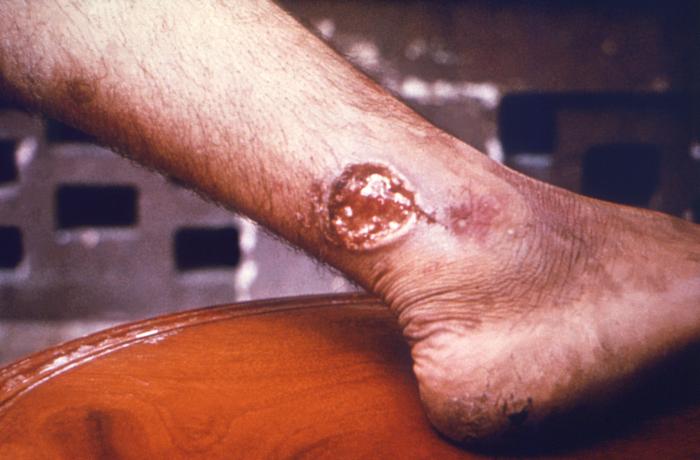Some of the roughly 1 million cases a year of the parasitic disease leishmaniasis don’t fit with the standard definition of the disease–the patients have unusual symptoms and front-line medicines don’t work. Now, researchers have discovered why many of these cases are so different–they’re caused by parasites with distinct genetic variations. The finding, reported in PLOS Neglected Tropical Diseases, was made by studying patients in northeast Brazil but may hold true elsewhere around the world.

Leishmaniasis is a parasitic disease caused by infection with Leishmania parasites, which are spread by sand flies in the tropics, subtropics, and southern Europe. Bites from flies carrying the parasite may turn into skin lesions which can become infected with bacteria. Brazil is one of six countries where 90 percent of new cases occur. However, a small percentage of these cases don’t fit into the most commonly recognized subtypes of the cutaneous disease. Previously, researchers have attributed these atypical cases (ACL) to the patients themselves, who may have chronic diseases or be pregnant. However, many patients don’t fit this pattern, suggesting there are other factors at play. Between 2005 and 2012, Luiz Henrique Guimarães, Albert Schriefer, of the Universidade Federal da Bahia in Brazil, and colleagues, followed 51 patients with ACL and 51 matched cutaneous leishmaniasis (CL) patients. The researchers collected not only clinical data, but blood and skin samples to study both the genetics of the parasite infecting each patient, as well as their body’s immune response to the disease.
The team found that patients with ACL had significantly more lesions, particularly above the waist, than those with standard CL. Moreover, their disease typically lasted longer and was more likely to be resistant to antimony, the front-line treatment used in Brazil. While 98% of CL patients healed after one or two courses of the drug, only 35% of ACL patients were treated after two courses. The researchers went on to show that the ACL found in the northeast of Brazil is caused by a genetically distinct strain of Leishmania braziliensis; the parasites from 62.5% of ACL patients studied had genetic variations seen only in ACL. Finally, levels of inflammatory cytokines, produced by the immune system, were higher in ACL.
“Precise identification of ACL is important because it usually does not readily respond to drugs commonly used to treat leishmaniasis in Brazil, but readily responds to other treatment options available,” the researchers write. “These findings may contribute to our understanding of the pathogenesis of ACL, and ultimately to a more logical approach to management of this and other unusual forms of [leishmaniasis].”


One thought on “Leishmania parasites have distinct genetic variations: Study”